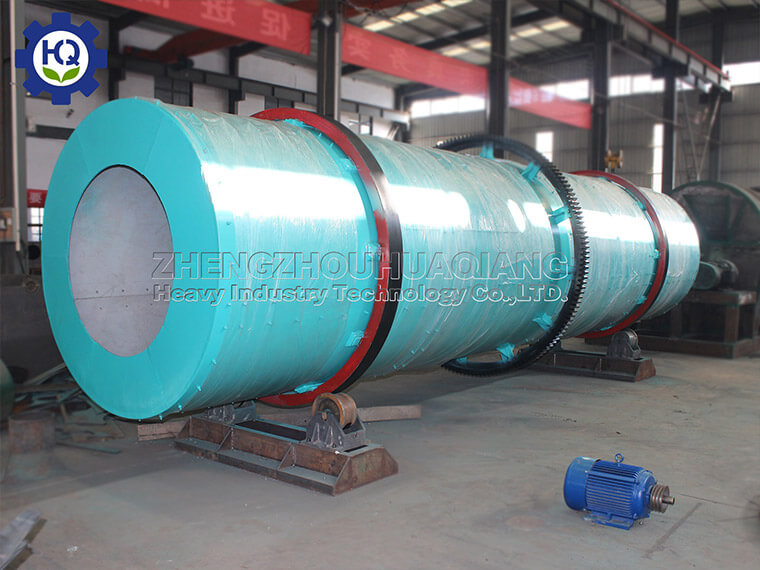The working principle of the drum granulator is that the belt and pulley are driven by the main motor and transmitted to the driving shaft through the reducer. The split gear installed on the driving shaft is engaged with the large gear ring fixed on the body and works in opposite direction. The material is added from the feed end and passed through the cylinder. It is made into particles by the special structure inside the cylinder, and then flows out through the outlet. Because of the continuous entry of materials and the continuous rotation of the granulator, mass production can be realized.
Overview of drum granulator structure The whole machine can be divided into five parts:
Bracket part: the whole rotating part of the machine body is supported by the bracket, which bears a large force. Therefore, the bracket part of the machine is made of medium carbon steel plate and channel steel dryly, and has passed strict quality control and special process requirements, which has reached the purpose of the machine. In addition, it is more important to fix the supporting roller on the rack. Considering that it will cause great friction with the body rolling belt, our factory specially selects anti-corrosion and wear-resistant materials, which greatly improves the service life of the machine. The supporting roller frame also adopts the casting integration technology. In addition, there are lifting hooks at the four corners of the supporting roller frame, which is convenient for loading, unloading and transportation

Drive part: the drive part of the whole granulator is the most important part. The whole body works in this way. The drive frame is made of high-quality channel steel dryly connected, and has passed the strict quality requirements. The main motor and reducer installed on the drive frame are ISO performance reliable products, and the quality is reliable. The motor drives the pulley, triangular belt, and reducer to the main shaft, so that the body works, The transmission reducer is driven by nylon shaft pin coupling in the main shaft working part.
Big gear: fixed on the machine body, it fits with the transmission pinion and drives the machine body to work in the opposite direction. It uses high-tech wear-resistant materials, so that the service life of the machine is longer.
Rolling belt: fixed to both sides of the body to support the whole body.
Body part: The body part of the whole granulator is particularly important. It is made of high-quality and medium-carbon steel plate dryly connected, with special rubber lining plate or acid-resistant stainless steel lining plate built in, to achieve automatic scar removal and tumor removal, eliminating the traditional scraper device, and achieving the purpose of this machine through strict quality control and special process requirements.
The drum granulator is especially suitable for granulation of light fine powder materials, especially for granulation of organic compound fertilizers. The finer the basic particles of the fine powder material, the higher the sphericity of the particles, and the better the balling quality. It is generally required that the particle size of materials before granulation should be less than 50 mesh. Typical application materials: chicken manure, pig manure, cow manure, carbon black, clay, kaolin, carbon, phosphorus and potassium and other organic compound fertilizers are suitable. The granulator developed and produced by our company is based on the manufacturing principle and technology of the stirrer granulator and the drum granulator. It is carefully developed and repeatedly tested. The granulator can produce bacteria at normal temperature, with reasonable structure design, and can produce spherical granular products. The granulator has the characteristics of low water content, easy drying, high molding rate, good particle strength, and beautiful appearance. It is the ideal bio-organic fertilizer and organic-inorganic fertilizer today, Granulation equipment for organic and inorganic compound fertilizers.